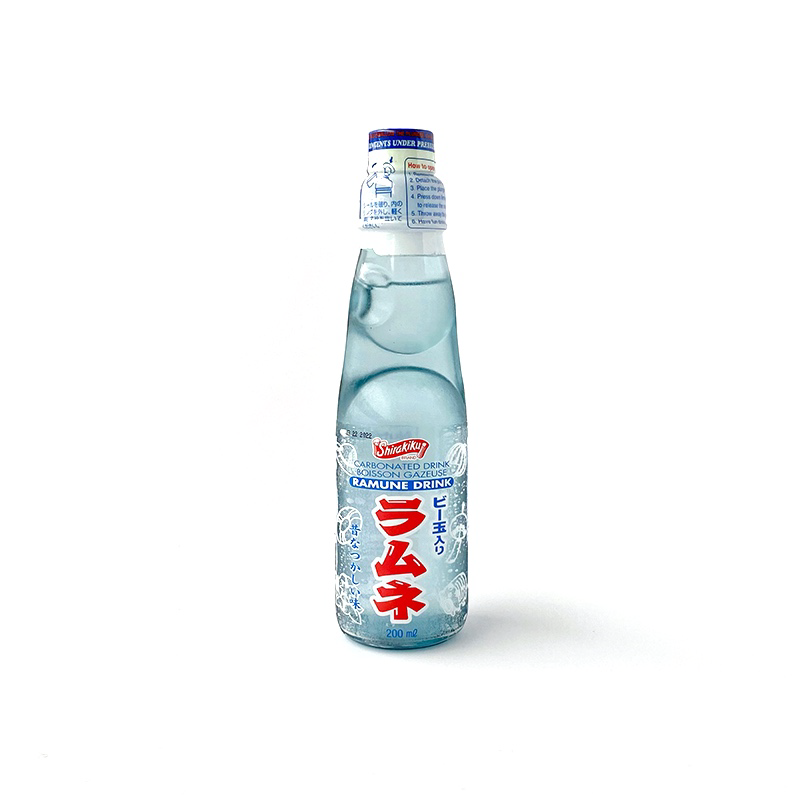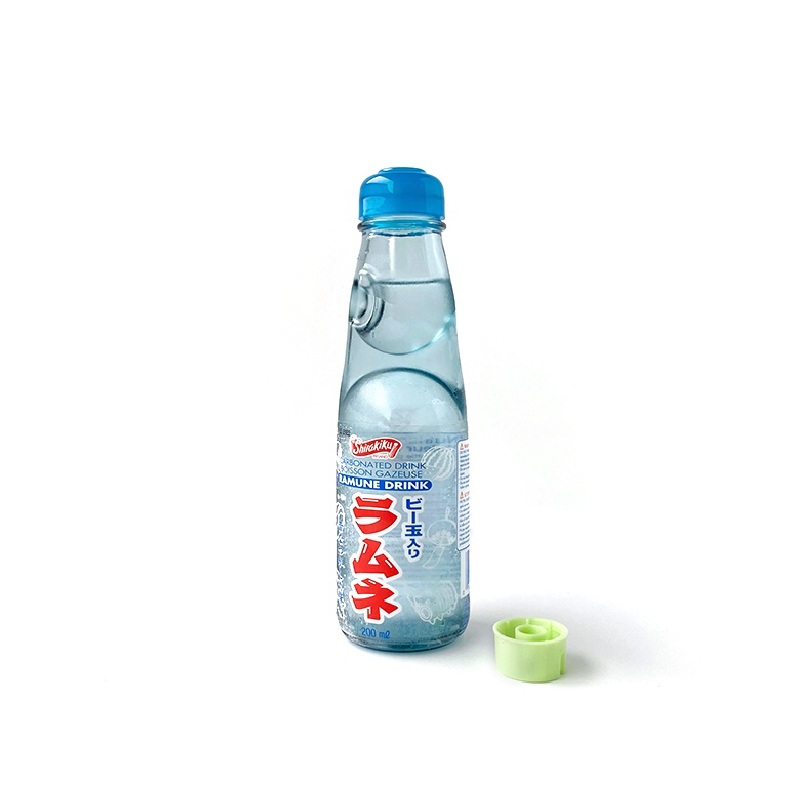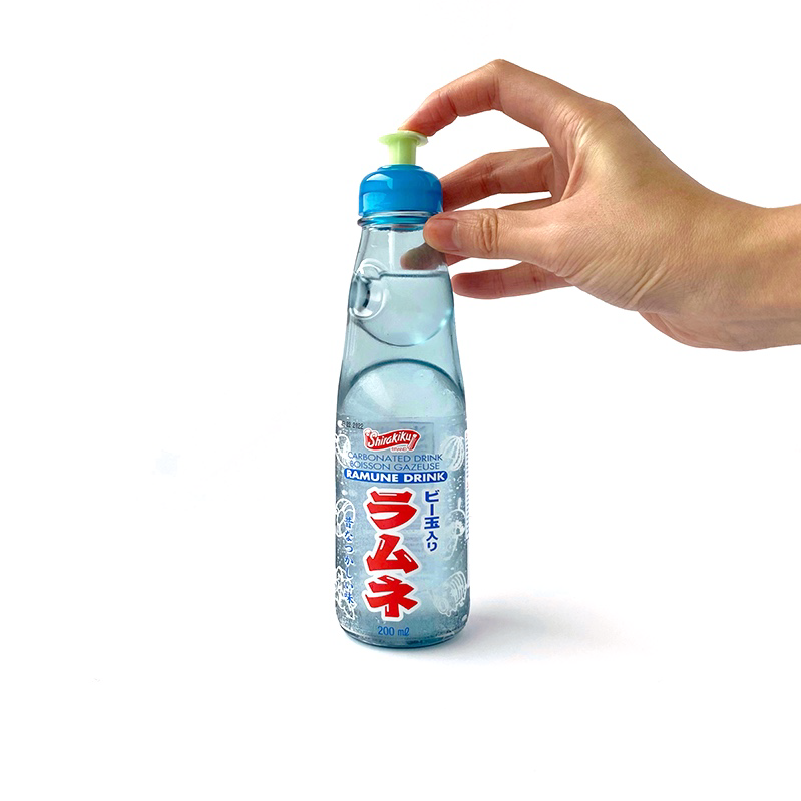Recently, as we were driving home from T&T, I tried Ramune for the first time. Ramune, for those who have not had the pleasure of consuming it, is a popular soft drink from Japan that is served in a special bottle called a codd-neck bottle. Sam likes to drink this soda because it reminds him of his childhood, but for whatever reason, I had never properly tried it from beginning to end. And this is very important to note because drinking a Ramune is a journey.
First, you peel off the wrapper. Second, you pop out a small device from the cap. Third, you push the device into the bottle top. This last step was, indignantly, a struggle. I didn’t expect opening a soft drink to require any strength. I mean, kids drink this! But after some finessing, I managed to push the device into the opening, followed immediately by the satisfying sound of a *clink* and *fizz*. The glass marble that was suspended in the bottle by the pressure of the drink dislodged and dropped into the valley.
But that’s not all. To drink it takes practice. If you tilt the bottle too much (ie if you’re being too greedy), the marble blocks the passage. You have to find the perfect angle to keep the marble suspended by the catch. And even then, you have to drink it slowly. The opening is simply not wide enough for fast and furious gulps. Of course, Sam was laughing the entire time because he just witnessed me clumsily fumble with something that he had mastered as a child.
That being said, I was completely tickled by the whole experience. Here was a product whose design dared to challenge, to pace, to intercept, and to play with the “user”. Its design goes against the conventional wisdom within my line of work as an interaction designer: that good design is frictionless and seamless. Heck, it goes against the prevailing ethos of our time and culture where convenience is paramount and sold as a commodity.
Bringing this back to architecture, I am reminded of the Floors of Agility chapter in the book The Experience of Architecture by Henry Plummer, which argues for non-linear, uneven staircases and floors:
“More challenging and playful terrains – variable staircases, shifting slopes, unexpected level changes – give us a chance to interact and improvise with the floor, reviving our bodily powers in space.”
Plummer goes on to argue that while we would like to believe that living in a harmless and predictable environment provides safety, “paradoxically, life as we know it is an evolving structure that resists monotonous conservation and demands instead a perpetual renewal by forgoing the comfort of a steady state.”
That paradox encapsulates the heart of the architectural works by Shusaku Arakawa and Madeline Gins of Reversible Destiny Foundation. You might have come across their work through the following pictures:
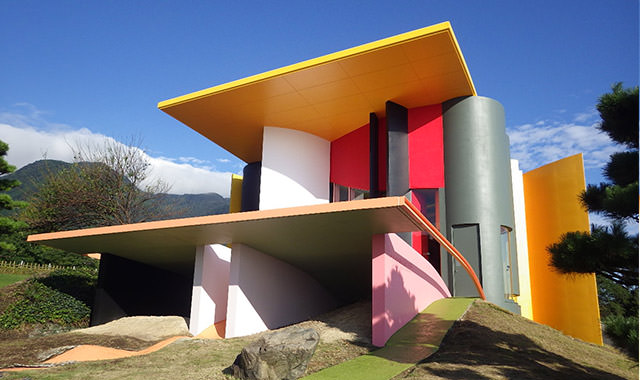
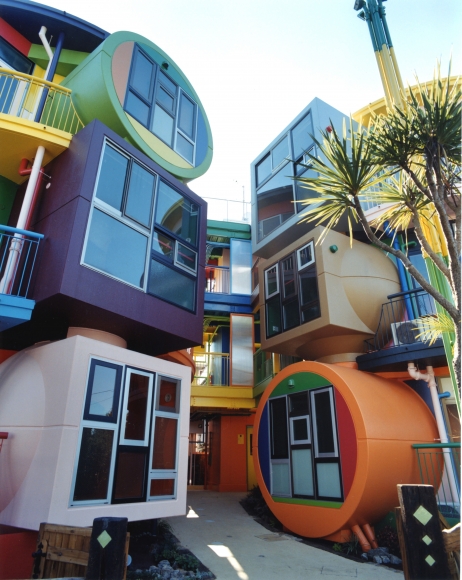
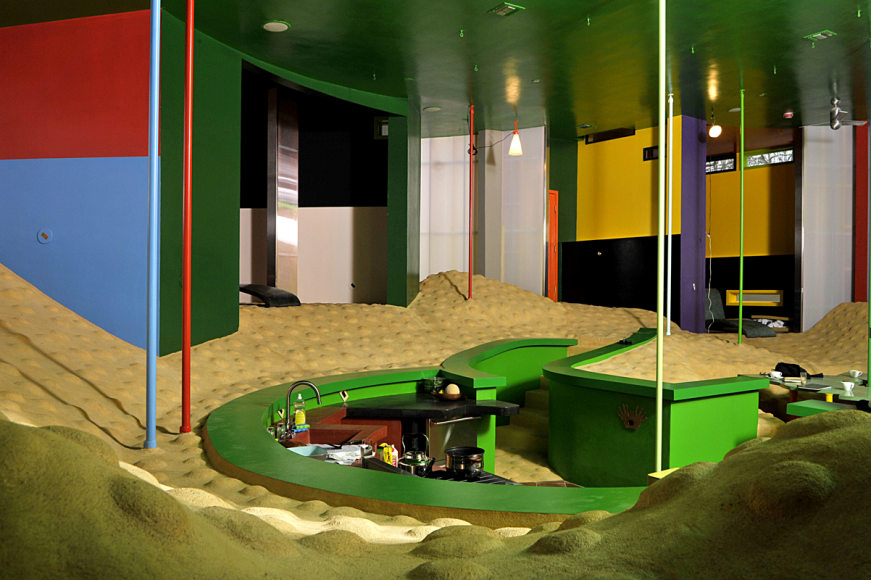
What makes their work so radical, besides the daring use of colours, is their total reconfiguration of how one interacts with a building. From the picture above, you can see the bumps they have added all over the floor in order to awaken your steps. Most of their work rests on the idea that in order to “live forever”, we have to be challenged by our environment.
“The terrain and walls are deliberately realized in unexpected ways to keep a person ‘tentative’ so that they must actively negotiate even the simplest tasks. This heightened body awareness and the challenging of senses can allow the body to constantly re-configure itself and with time become a means to strengthen the immune system.”
While I’m not going to design anything that purposely creates frustration any time soon, it is good practice in my book to challenge conventional wisdom. Is a fast experience really the end goal in interaction design? What are we sacrificing in our pursuit of speed? How can the house we’re building incorporate unexpectedness and play?
